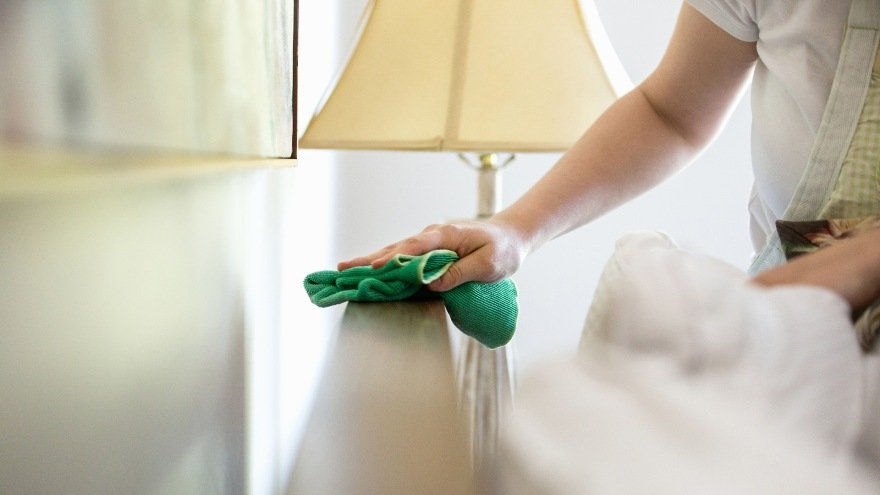The benefits of regular deep cleaning
- leadadsmanager
- Feb 20
- 3 min read
Updated: Feb 24
What is deep cleaning?
Deep tidying is a comprehensive and detail-oriented method of maintaining hygiene that surpasses standard surface sanitization. Unlike everyday decluttering, which primarily addresses visible dust and routine maintenance, intense purification focuses on eliminating concealed dirt, built-up grime, bacteria, and allergens trapped in upholstery, carpets, and hard-to-reach nooks. This process incorporates advanced sanitization, disinfection, and specialized techniques to achieve a superior level of cleanliness. It is particularly vital for fostering hygienic surroundings in both homes and commercial areas, as it eradicates harmful pollutants that may compromise indoor oxygen quality and contribute to various health concerns.

A proper deep purification session encompasses tasks such as scrubbing tile grout, steam-cleaning carpets, washing baseboards, purification inside appliances, and disinfecting frequently touched surfaces. This level of neatening helps remove stubborn stains, prevent mold growth, and enhance overall hygiene. Whether performed professionally or as part of a thorough DIY effort, deep sanitization ensures that sections remain pristine, fresh, and free from harmful pathogens that regular purification might overlook.
How often is deep cleaning necessary?
The frequency of deep refreshing depends on several factors, including the type of space, occupancy level, and specific environmental conditions. For residential homes, meticulous neatening is typically recommended every three to six months to maintain a hygienic living surroundings, reduce allergens, and preserve the condition of household items. However, households with pets, young children, or individuals with allergies may require more frequent deep cleaning to eliminate pet dander, dust mites, and overhead pollutants.
In commercial and office areas, substantial refreshing should be conducted at least quarterly to ensure compliance with health and safety regulations and to provide employees and clients with a clean and professional atmosphere. High-traffic areas, such as restaurants, hospitals, and retail stores, often require monthly meticulous cleaning due to the constant influx of people and increased exposure to bacteria and contaminants. Regular assessments should be conducted to determine if intense neatening is needed sooner, especially in environments prone to spills, heavy foot traffic, or overhead particles.
Key benefits of regular deep cleaning
Improved indoor air quality
Meticulous neatening removes dust, pet dander, mold spores, and overhead allergens that accumulate over time. These contaminants have the capacity to severely impact breeze quality, leading to respiratory issues such as asthma and allergies. By thoroughly sanitization vents, carpets, and upholstery, intense cleaning ensures that the oxygen remains fresh, reducing health risks and enhancing overall well-being.

Elimination of bacteria and germs
Routine purification may not be sufficient to eradicate harmful microorganisms lurking in high-touch areas. Substantial home cleaning involves using hospital-grade disinfectants and steam-cleaning techniques that effectively kill bacteria, viruses, and fungi. This helps reduce the spread of illnesses, making it essential for homes, offices, healthcare facilities, and commercial establishments.
Prolonged lifespan of furniture and flooring
Over time, dirt, grime, and spills has the capacity to degrade furniture upholstery, carpets, and hardwood floors, causing them to wear out prematurely. Penetrating refreshing helps remove ingrained debris and stains, preserving the integrity of materials and prolonging their lifespan. Regular maintenance prevents costly replacements and keeps surfaces looking new and well-maintained.
Odor elimination and fresh environment
Lingering odors caused by mold, food spills, pets, or stagnant oxygen able to make a space feel unpleasant. Penetrating sanitization removes these sources of odor at their root, rather than simply masking them with oxygen fresheners. By disinfecting carpets, fabrics, and ventilation systems, intense tidying ensures a consistently fresh and inviting atmosphere.
Pest prevention
Crumbs, food residues, and moisture attract pests such as cockroaches, ants, and rodents, which has the capacity to pose serious health risks. Meticulous refreshing eliminates food sources and breeding grounds for pests, significantly reducing the risk of infestation. This is particularly crucial for kitchens, restaurants, and warehouses where food storage and handling occur.

Enhanced aesthetic appeal
A well-maintained and deeply cleaned space looks visually appealing and professional. Whether in a home, office, or commercial setting, spotless surroundings enhance the overall impression and creates a welcoming atmosphere. Penetrating sanitization helps remove stains, smudges, and dust buildup that able to make a space look neglected or unkempt.
Stress reduction and mental well-being
A clutter-free, sanitized surroundings have a direct impact on mental health. Studies have shown that living or working in a clean space reduces stress levels, increases productivity, and promotes relaxation. Substantial decluttering not only enhances physical cleanliness but also contributes to an overall sense of peace and organization, helping occupants feel more at ease and focused.
Regular penetrating tidying is not just about aesthetics—it plays a vital role in maintaining health, comfort, and longevity for both residential and commercial areas. By incorporating intense purification into a routine maintenance plan, property owners able to ensure a cleaner, healthier, and more pleasant environment for everyone.




